I’m a street photographer with a preference for manual-focus 50mm-equivalent lenses. I got my start with a Zeiss Contax rangefinder (w/ 50mm Sonnar f/1.5) and Pentax MX SLR (w/ 50mm SMC Pentax-M f/1.7), and loved the compact size, minimal feature set, and high degree of manual control both of these cameras offered me.
Today I shoot with a Fujifilm X-Pro3, with Fuji’s compact XF35mmF2. It’s a lovely lens (and the combination is weatherproof!), but the manual focus-by-wire system just can’t match the tactile experience of a mechanically focused lens. So I’ve been on the hunt for a replacement (well, complement—the weatherproofing is indispensable for street photography in Amsterdam!) that meets a specific set of criteria:
- maximum 35mm focal length (I prefer ~35mm, but I’d accept something a little wider too)
- light & compact (and so, probably, Leica mount)
- mechanical manual focus
- need not be very fast, since I’m shooting at f/5.6 or f/8
- bonus points for character that suits my style
- some bonus points for being handsome because who doesn’t enjoy pretty things?
- absolutely must be reasonably priced, I cannot afford the Leica tax
I’ve been through a few lenses in this search, including the Industar-69, previously reviewed here. And I have a few more I want to try. But let’s just start with the current winner, because the lens I’m using now is unique and a little under-represented on the internet.
So, please meet what is now my new favorite street lens: The 35mm Kyoei W.Acall f/3.5 in M39 Leica thread mount. I’m not entirely certain how I first heard about the this lens, but this review at Filmosaur pushed me over the edge. They show up on eBay and Etsy (!?) with just enough regularity that snagging one wasn’t too difficult—mine even came with a viewfinder. And the price isn’t terrible at €400–500 plus shipping and VAT from Japan.
What even?
What even is this lens? I’d never heard of Kyoei before (although I now own multiple Kyoei lenses, and am seeking more!). It seems the internet is full of lore, stories, and speculation as apparently there aren’t very good records available, at least not in English. I don’t want to repeat hearsay until it becomes fact, so let’s see what primary and secondary sources we can find.
The Company
Kyoei Optical Co., Ltd. (sometimes styled as ‘koc’) is a Japanese lens manufacturer from the mid twentieth century, and sold lenses under the “Acall” brand name, and possibly some others.
We can glean as much from this brochure I found after an internet search. Our lens doesn’t appear in the catalog, though there is a similarly spec’d one on the first page. There is no date in the brochure. But, judging by the “not a Spotmatic” used to demonstrate how their (M42) lenses work and the heavy reliance on the Futura typeface, I’m going to date this to the late 1960s. (The name “Kyoei”, the text “Printed in Ja…” on the last page, and the photographs of the Imperial Palace in Tokyo all give indirect evidence that the company is, in fact, Japanese in origin.)
Secondary sources suggest that Kyoei is the same company as Komura, if only because they produced a number of lenses that look identical to each other. Compare what you see here to the catalog above. It’s not hard to find unfounded (but likely true) claims that Kyoei, Petri, Kuribayashi, and Soligor were all brands produced by Komura. Or they could have all been smaller factories that shared equipment and expertise, this happens. But who knows, all this is just circumstantial. If you have more detail on the nature of the company, I’d love to know more!
The best secondary source I’ve been able to find is this lovely Dutch blog that offers some potential, yet still secondary, insight into Komura and its many lenses and brands. (It also includes a photo of a W.Komuar 35mm f/3.5 that looks exactly like mine, FWIW.)
The Lens
If you go searching for this lens online, you find something unexpected. Apparently there is another Kyoei W.Acall 35mm f/3.5 that looks entirely different, and has a different optical design. The other one is apparently very transmissive of UV light; mine not so much. So searches mostly return UV photography enthusiasts loving the other lens, or hating on this one.
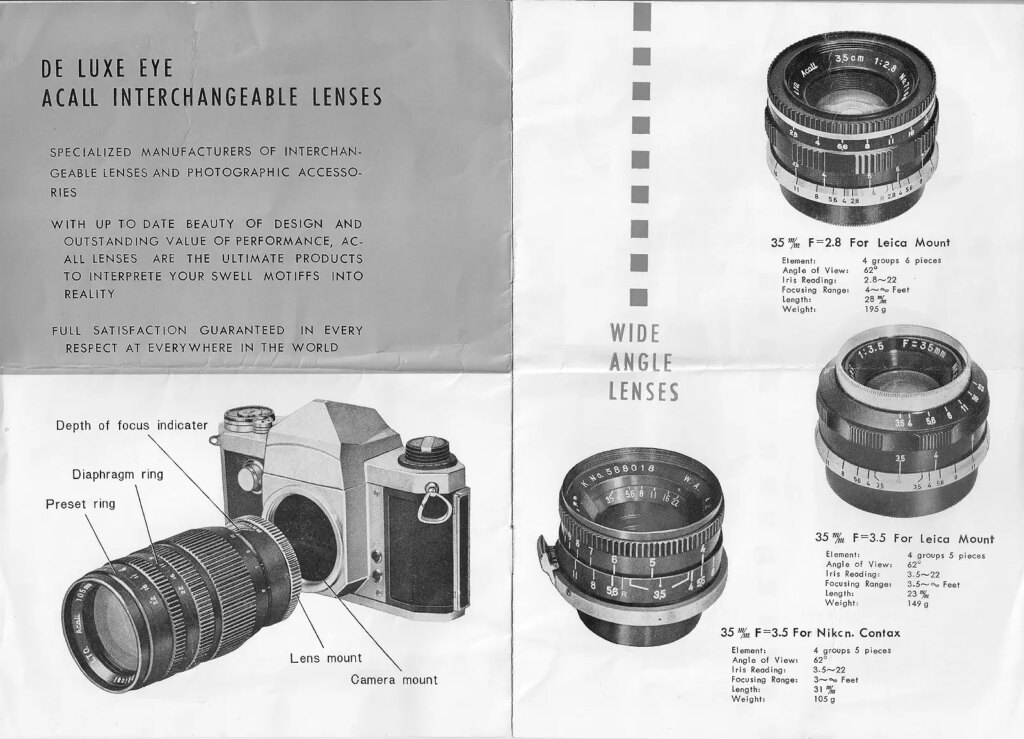
Even so, one UV photographer thoughtfully uploaded a page from a slightly different catalog, one that includes our lens! Now, we know something more about it without cracking it open. A little bit more, anyway. Like this marketing gem: Kyoei lenses “are the ultimate products to interprete [sic] your swell motiffs [sic] into reality.” Boy, am I ever full of swell motifs that require interpretation into reality. We also learn the lens has 5 elements in 4 groups, whatever that means. I can’t find a lens diagram. Does it matter? Not really. The real question is: How does it perform? And the answer is: It’s a delight.
Anyway, in the end, the lens and the manufacturer remain a bit of a mystery to me, and I’d really like to learn more. If you know more…please share!
Handling
OK, enough of that. Let’s talk about the lens. Because my best alternative to my dream walkaround lens is the Fujifilm XF35mmF2, I’m going to use that lens as a benchmark for comparison.
Weight and Size
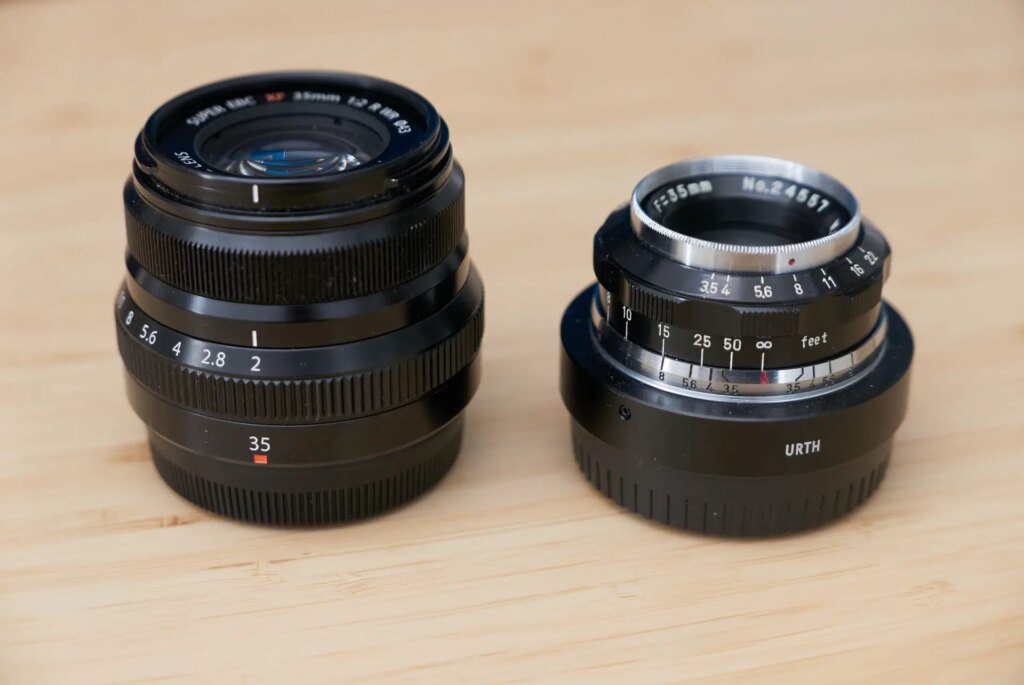
This lens weights 149g, according to the catalog. It feels dense and hefty, for all that. But it’s still comparatively light, coming in somewhat under the Fujifilm XF35mmF2 at 170g.
And the image above speaks for itself—this lens is really small, even mounted on a M39-to-Fuji X adapter.
Focus
Despite its size, the Kyoei W.Acall has a chunky focus ring with nicely scalloped edges, making it easy to grasp even for my large hams hands. The action is smooth, a little on the stiff side, and very precise for typical street distances. Full focus rotation is about 180º, and typical for Leica rangefinder lenses, close focusing is indicated at 3.5 feet (~1m).
The Urth adapter leads to focusing beyond infinity, but it can also be shimmed pretty easily with some hand-cut paper or aluminum foil. Which I have done, with the result that the focus scale is reasonably accurate.
The only downside is that focusing wide open at f/3.5 isn’t the best focusing experience with Fuji’s digital focusing aids—they really want more light than the W.Acall makes available. But it works!
Note: The focus scale on my lens is measured only in feet. I prefer to think in meters, but at least I understand feet. Your experience and preferences will of course vary.
Aperture ring
The aperture ring on the Kyoei W.Acall is an awkward appendage on the front of the lens that is difficult to use, doubling as the filter ring. It is clicked from f/3.5 to f/4 and then whole-stop increments to f/22.
Its placement is such that you have to take the camera away from your face to find it and turn it. Turning it also turns the focus, so if you’ve already set focus, you have to hold the focus ring with a finger from one hand while adjusting the aperture with the other. This means that the W.Acall is better suited for aperture-priority metering, which honestly is fine for me, as I’ll generally leave it at f/5.6 or f/8. I take it this is a pretty standard configuration for LTM lenses, but I’m new to this world!
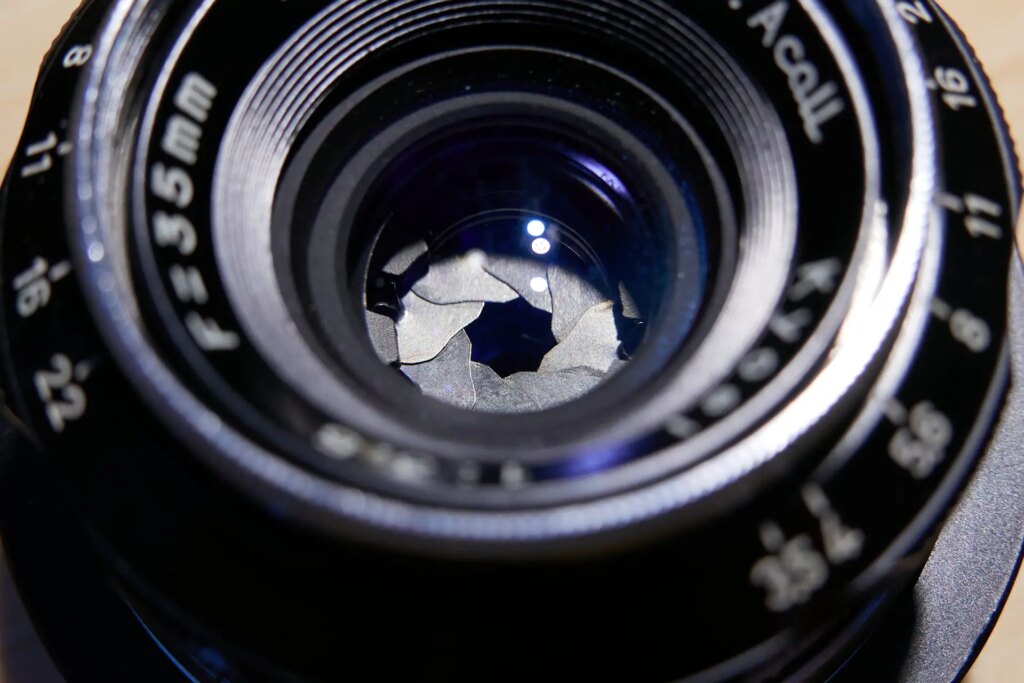
The aperture itself is 8-bladed and, get this: While at f/3.5 and at f/16 the aperture is circular, between f/5.6 and f/8 the aperture is, for reasons that escape me, star-shaped.
In use
All of which is to say I’ve found I’m better off using zone focusing techniques than trying to adjust aperture and focus on the fly. I’ve taken the time to carefully calibrate infinity focus with my M39 adapter, so most of the time I put the aperture at f/8, and preset the focus to 2m–20m, and the results usually turn out. There is essentially no need to focus across those distances at f/8, so missing focus is a thing that just doesn’t happen in these circumstances.
Filter ring
I just happened to have a press-on 36mm lens cap that fits snugly, but well. I believe the lens was designed for Leica A36 clamp-on filters, and it appears to have threads for what I am guessing for 34mm screw-in filters, but I don’t have filters of those sizes to try out.
Accessories
As originally sold, the lens came with a cold-shoe–mount viewfinder and a nice felt-lined carry case, lens hood, and of course lens caps. Mine didn’t come with its case or lens hood.
I have the viewfinder, but I haven’t had reason to try it out. It doesn’t fit well in my Fujifilm X-Pro3’s hot-shoe (too thick?), which is just as well, since I don’t need it. (The X-Pro3, if you didn’t know, has electronically produced framelines in the optical viewfinder, very nice.)
I do have the original bakelite lens cap, but it’s not in great condition (because 80-year-old bakelite), so good thing I had a spare lens cap lying around.
Image quality
Let’s not beat around the bush: This lens produces sharp images with excellent character. I am absolutely in love with the performance of this lens.
As we’ll see, it doesn’t quite match the technical excellence of the XF35mmF2 (and so will fall short of Fuji’s other excellent ~35mm lenses), but remember this lens is 80 years old and of a more basic design than the Fuji. But if these small differences matter, then there is no pleasing you. Or this lens isn’t suited to your purpose.
Bear in mind that my X-Pro3 has an APS-C sensor, and so we are getting the best part of the lens. I can’t comment on how the corners look on a full frame camera (at least not until I get my Zorki repaired!).
Since my XF35mmF2 is my benchmark, let’s just start with a quick comparison of the rendering between these lenses. The shots below (and the crops a little lower) will be my only clinical shot, because I want to frame my understanding of this lens. Every other shot I’m going to share with you in this article has been edited to my tastes, and was taken on a recent trip to Napoli. I do this not to show off my own skills, or to obscure the nature of this lens’s capabilities, but to put this lens in the best light, to highlight what it is truly capable of, and to provide you with images that might inspire you to try this lens out for yourself.


Sharpness
Let’s zoom in on that image above.
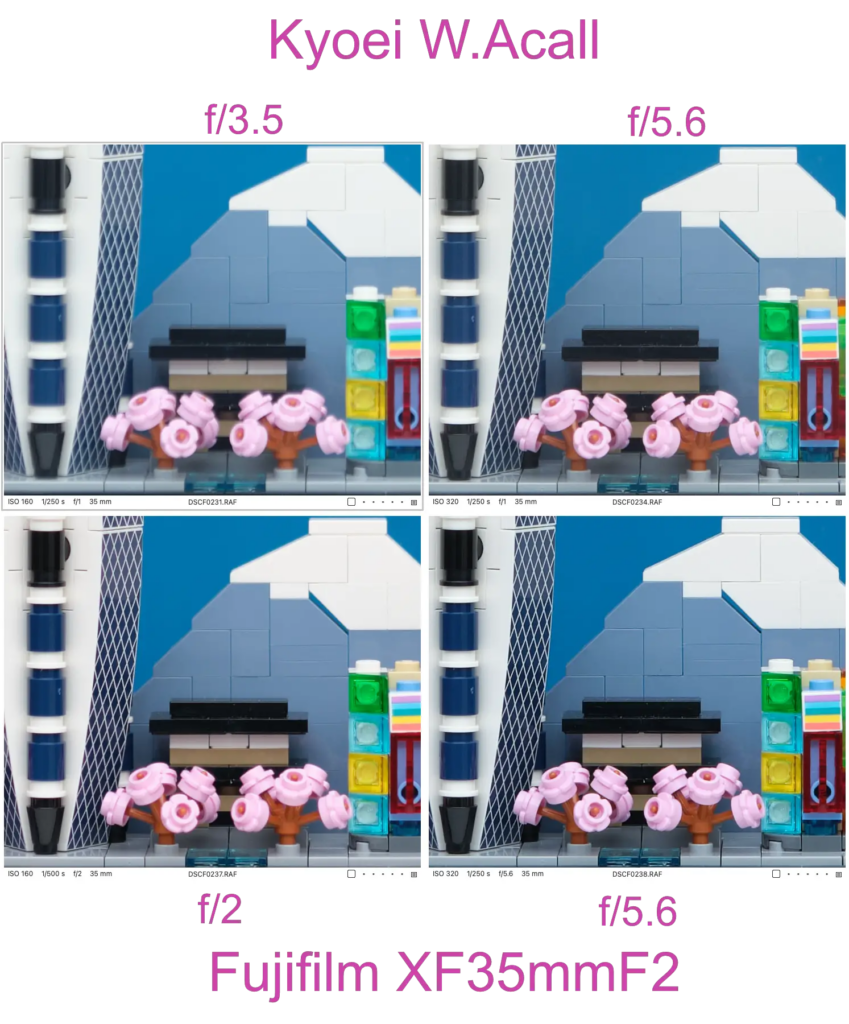
Insert boilerplate text here: Somewhat soft wide open, perfectly sharp across the frame stopped down a bit. No news here, the sharpness is 100% predictable for a lens of this age and design.
Comparing it to the Fuji, we see that wide open, it is noticeably softer than the Fuji, but stopped to f/5.6 you’d be hard pressed to tell them apart (but the Fuji is a bit sharper). Again, nothing news here.
OK, that nonsense out of the way, let’s get to the important stuff.
Vignetting
There is light vignetting from f/3.5, improving slightly at f/5.6—I didn’t measure beyond that. It’s super easy to remove in post, but I like it and maybe you do too.
The Fuji has very heavy vignetting at f/2, clearing up almost entirely at f/5.6.
Color
The color rendering of the Kyoei W.Acall appears to be very close to the Fuji, albeit slightly cooler overall. I would be unable to tell them apart, honestly.
Lens flares
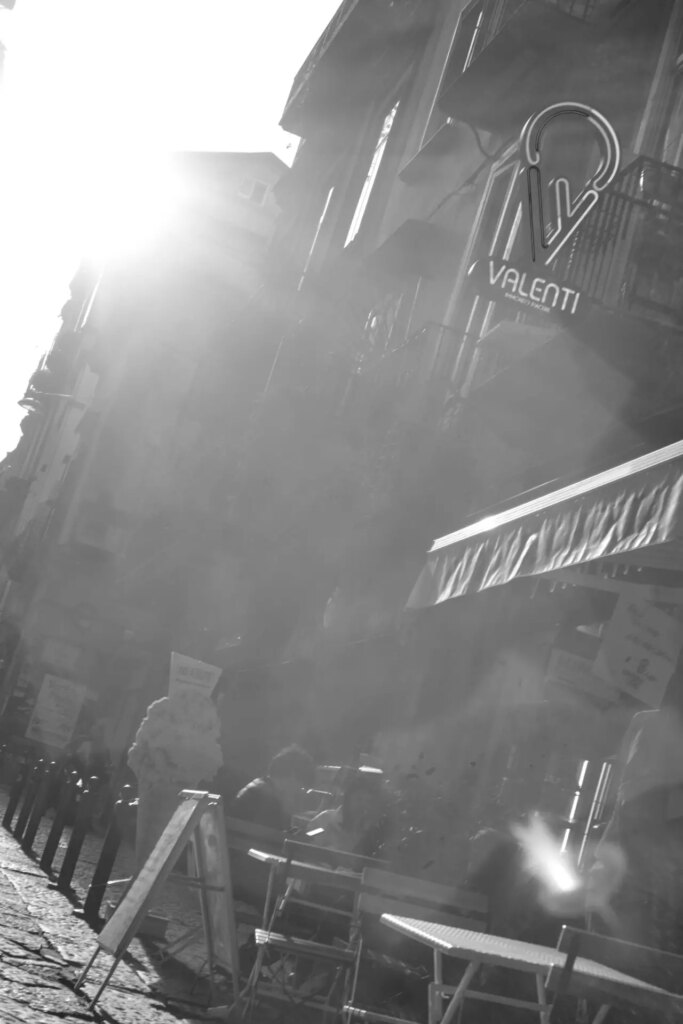
The W.Acall is not overly prone to flaring. The front element is clearly coated, and you have to be shooting into the sun to get an ugly veiling flare. There can be some interesting lens flare at about f/5.6 because of the star-shaped aperture (as in this image), but it’s very subtle. I don’t miss the lens hood, to be perfectly honest.
Distortion and aberration
The Kyoei W.Acall shows absolutely no sign of distortion, I live in a city made entirely of brick buildings, and I have taken some shots of brick walls to check. I’m not sharing them here because they are boring—and perfectly rectilinear.
Moreover, there is no sign whatsoever of axial or lateral chromatic aberration, or purple fringing, even in shots with extreme contrast.
Depth of Field
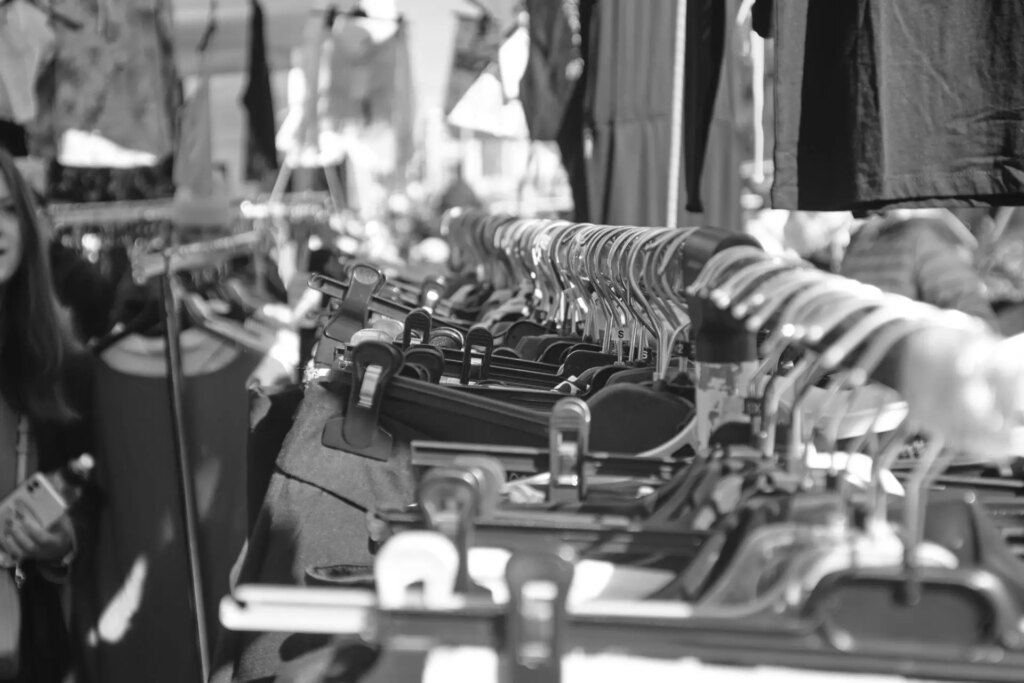
One of my favorite things about this lens is the fall-off from critical focus to out of focus areas. The image above is about as extreme as I could make it, shooting at f/3.5. You can see there is a fair amount of the image that remains in good-enough focus. At f/8, the depth of field is incredibly deep, and maintains acceptable sharpness throughout (most of the photos below were shot at f/8). That makes this lens a champ for zone focusing and street photography—always ready to shoot.
Contrast
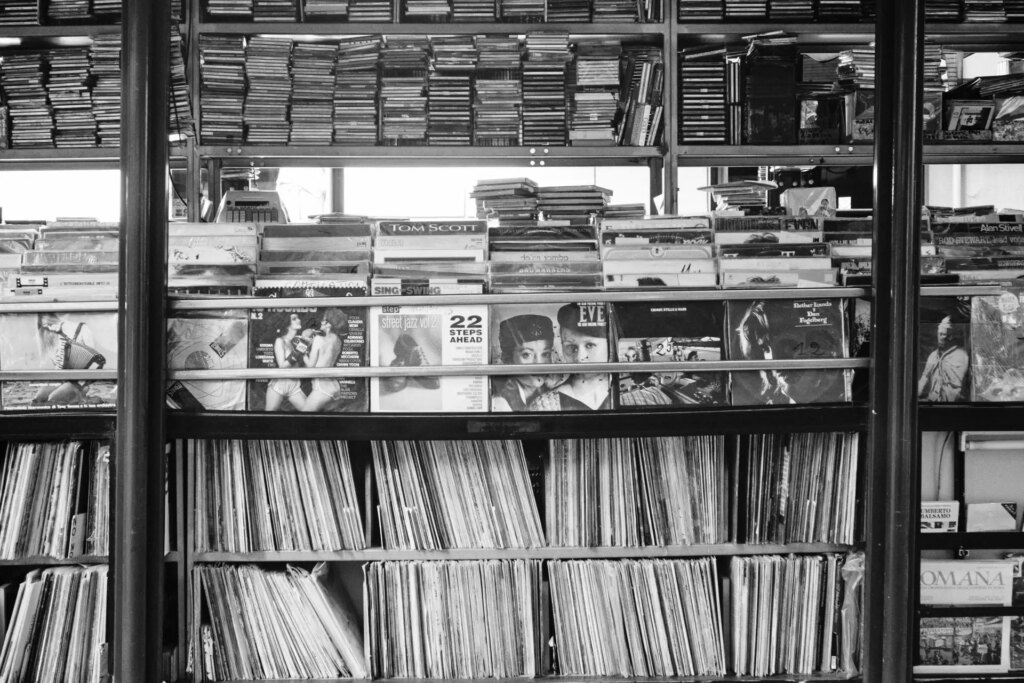
This lens produces excellent contrast. Full stop. Nothing else to be said here.
Bokeh
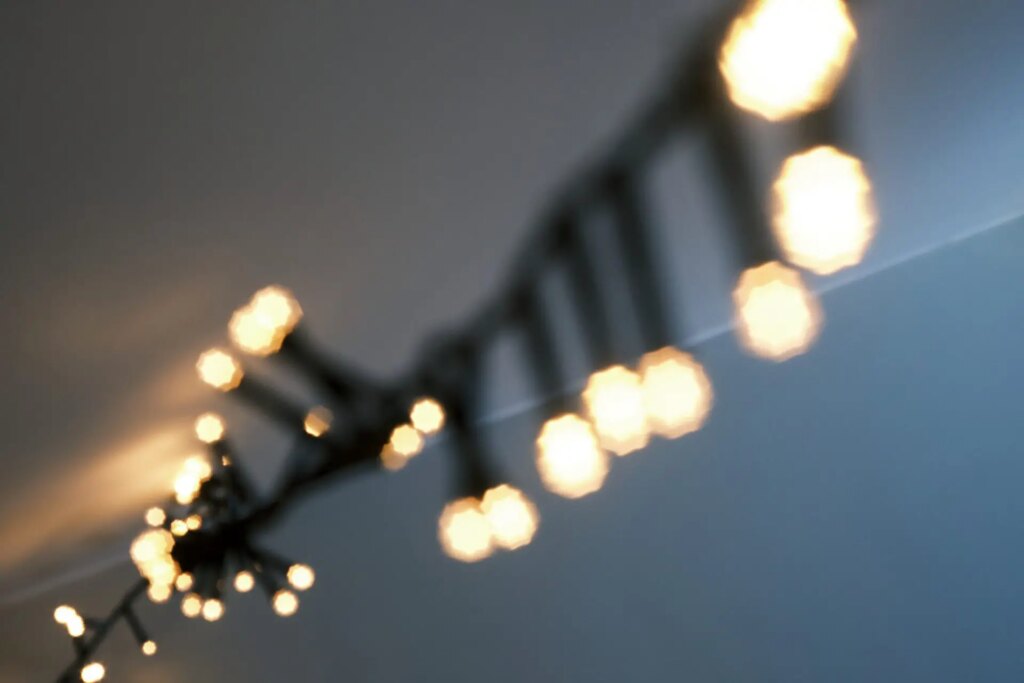
At 35mm with a fastest speed of f/3.5, you’re not going to get much bokeh in your shots. But, when the stars (or, in this case, fairy lights) align, something magical happens because of the star-shaped aperture. Love it or hate it, you have to work to make images like the one above happen, but they can happen. It also affects lens flare, but that’s even harder to make happen, and when it does occur, the effect is very subtle.
Glow
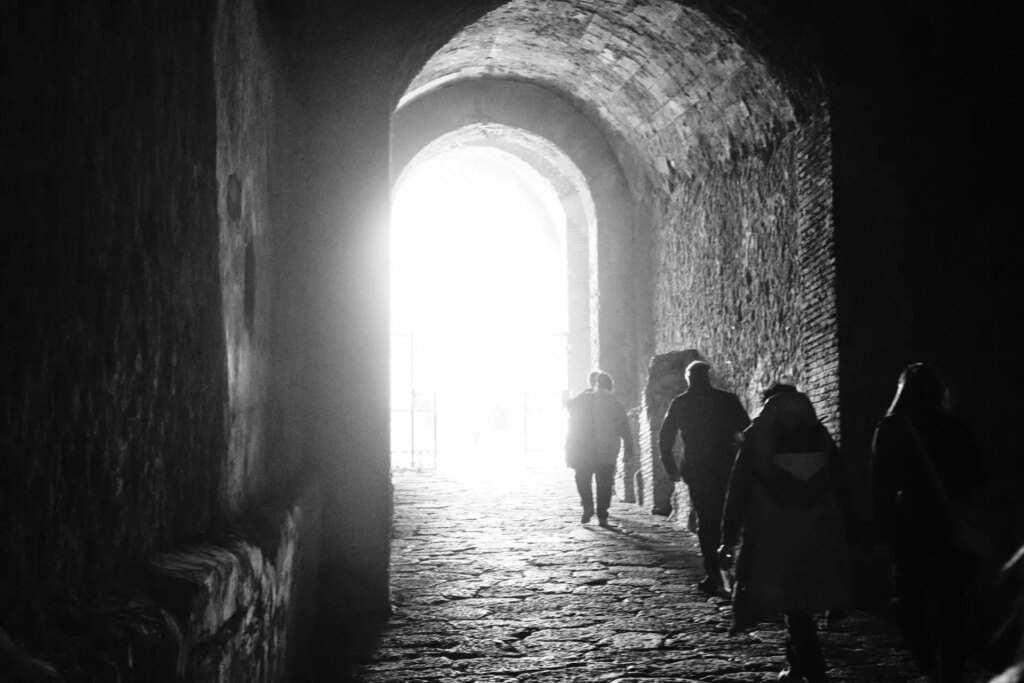
This. Lens. Positively. Glows. It takes high-contrast scenes like this one, or ones below in Napoli where the dark interior spaces and alleys contrast strongly with the sunny clear sky, and renders everything with an ethereal appearance. Holy smokes. I don’t know about you, but I can’t get enough of this. Let’s just see a few more images that show this glow.
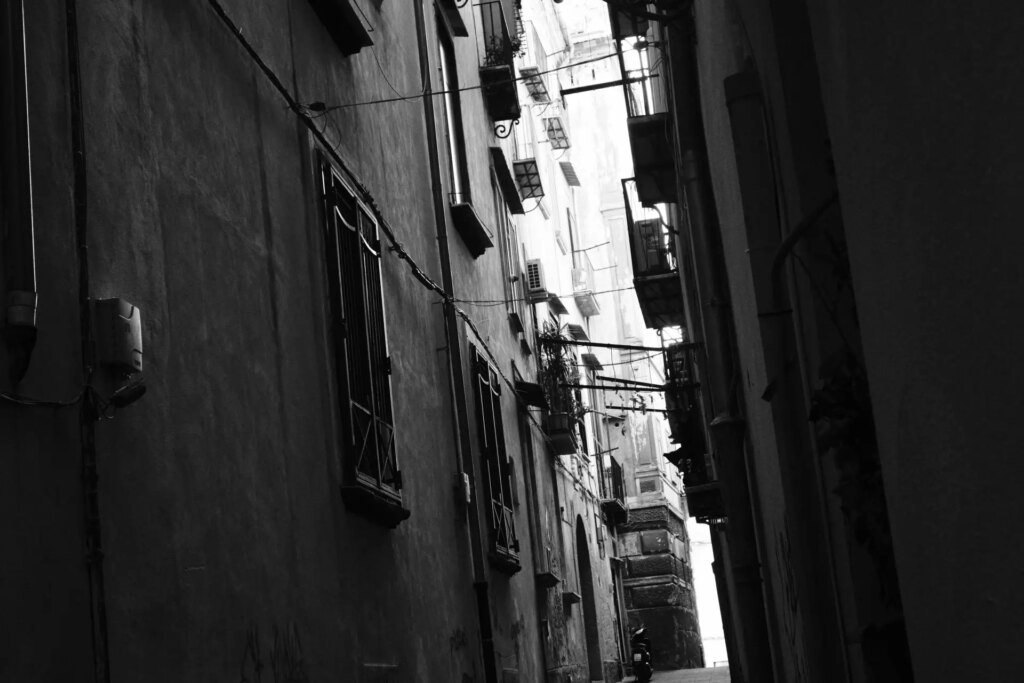
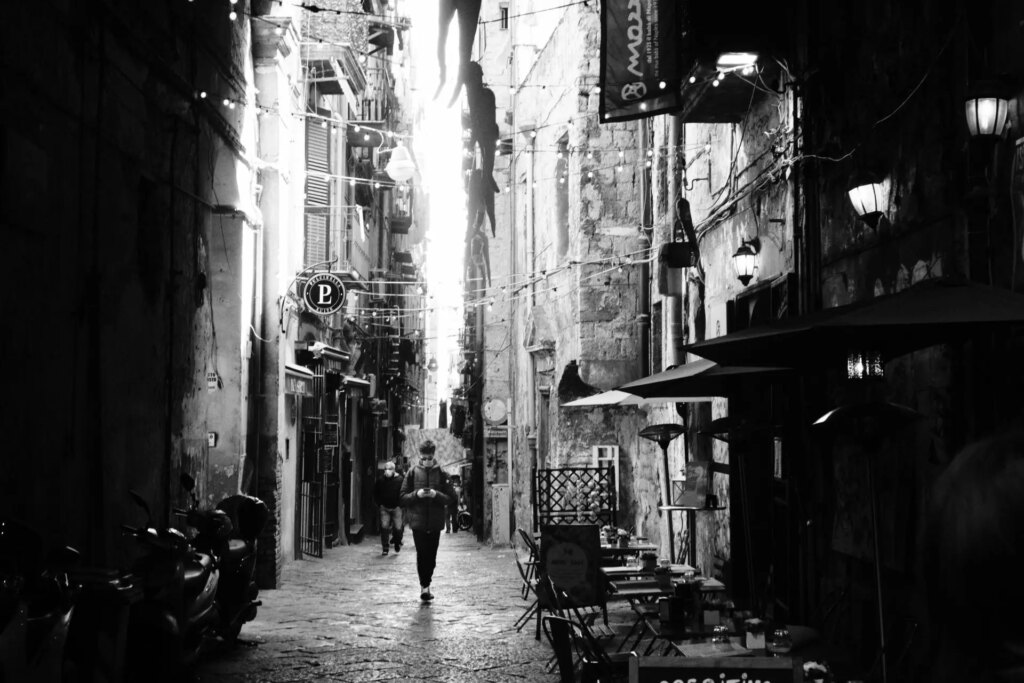
I can say that unlike some of my other lenses, this glow is not the result of dirt, dust, inclusions, cracks, scratches, or “cleaning marks”. It’s very controllable, and only shows up in high contrast scenes. My lens is in pristine optical condition, almost like new. This is an effect of the optical design. If it were dirt, you’d see an overall reduction of contrast, which we don’t see.
More images
Napoli’s dark, tight alleys and lively street life make it a wonderful place for capturing atmospheric, intimate street images. The high contrast encourages that glow, and the tight quarters (and not-so-wide angle of view) impart a sense of crowdedness and intimacy that I love.
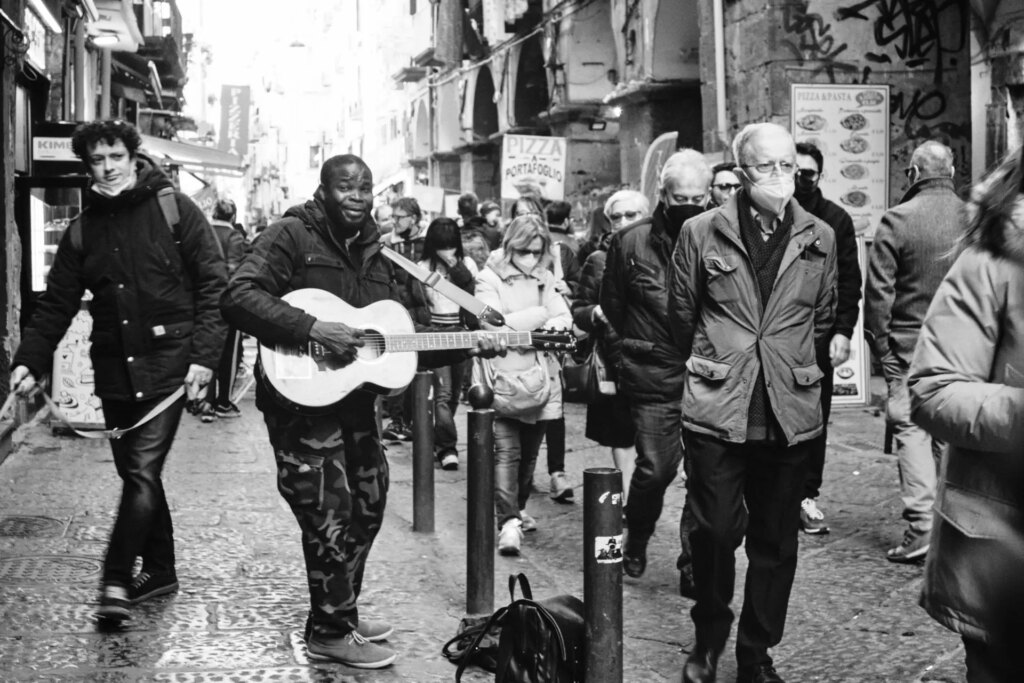

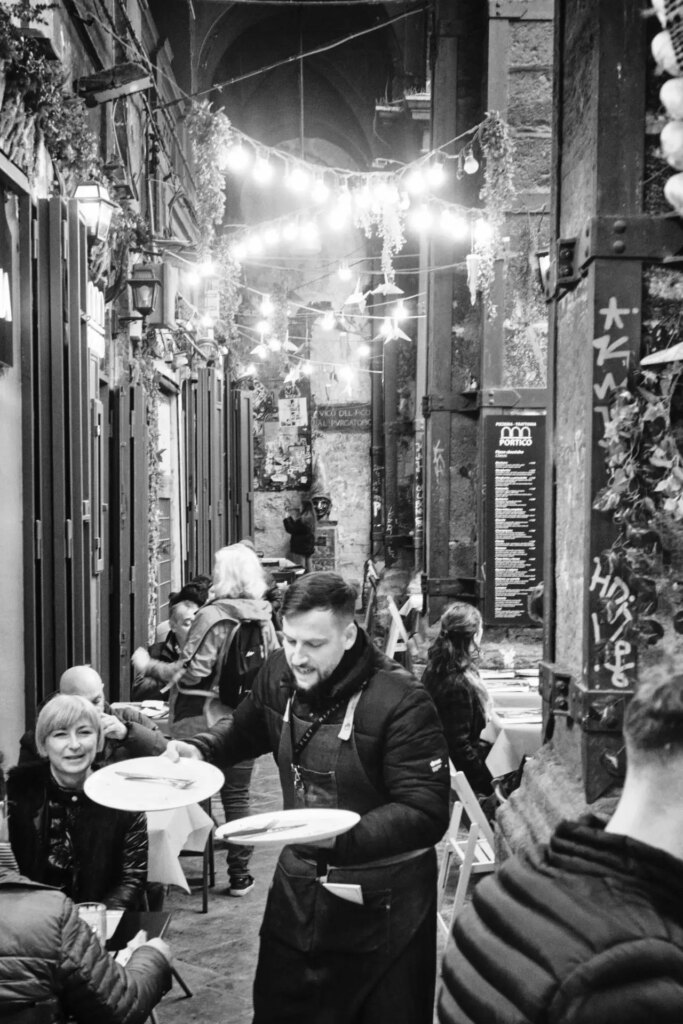
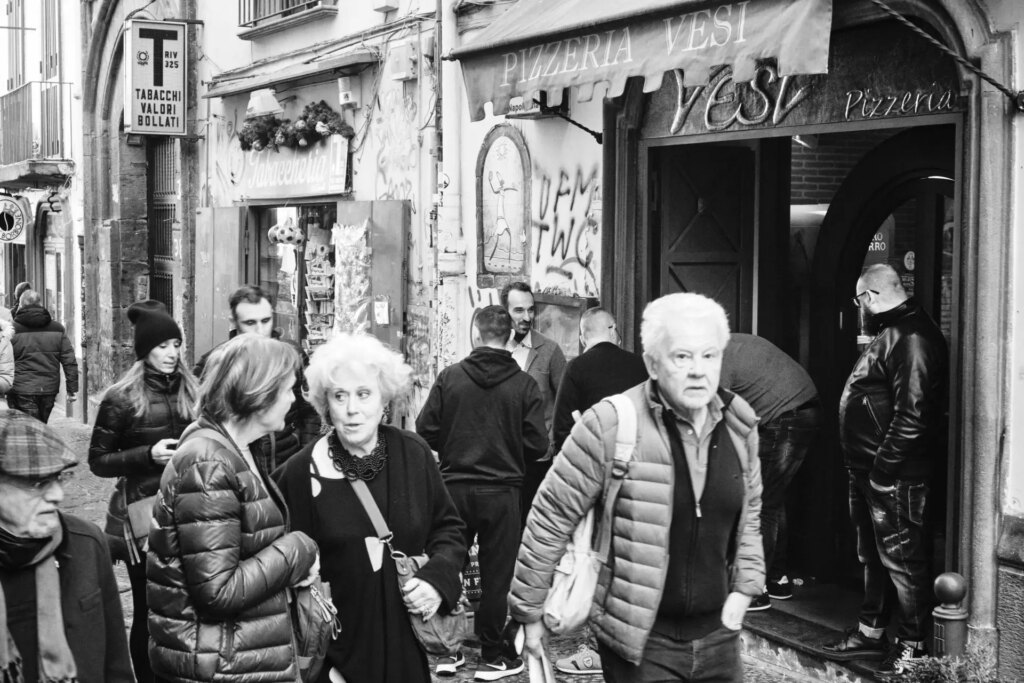
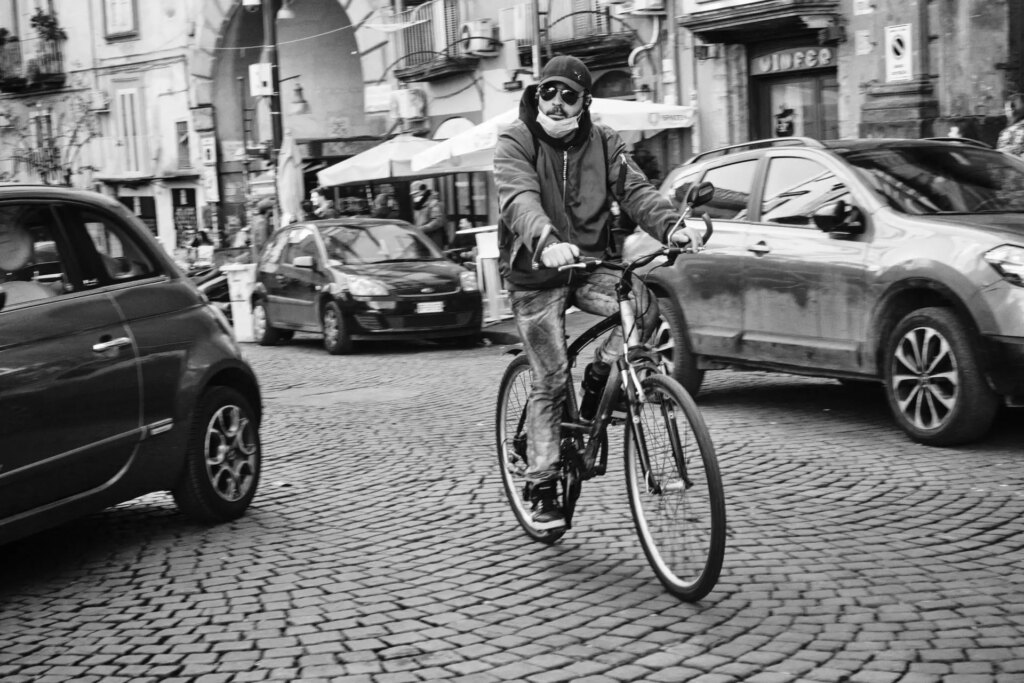
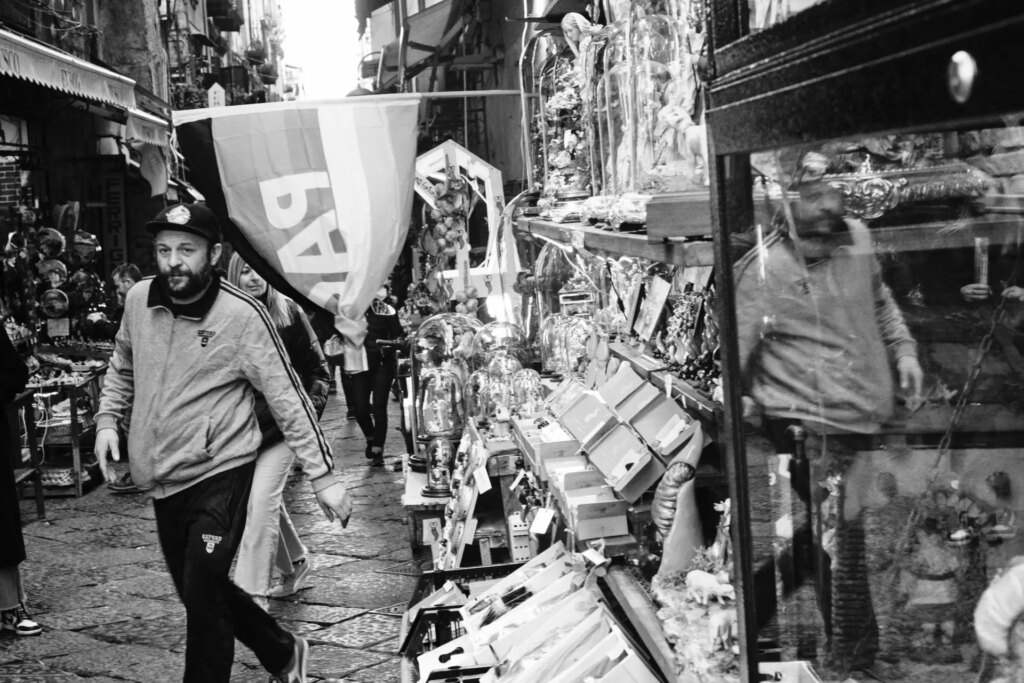
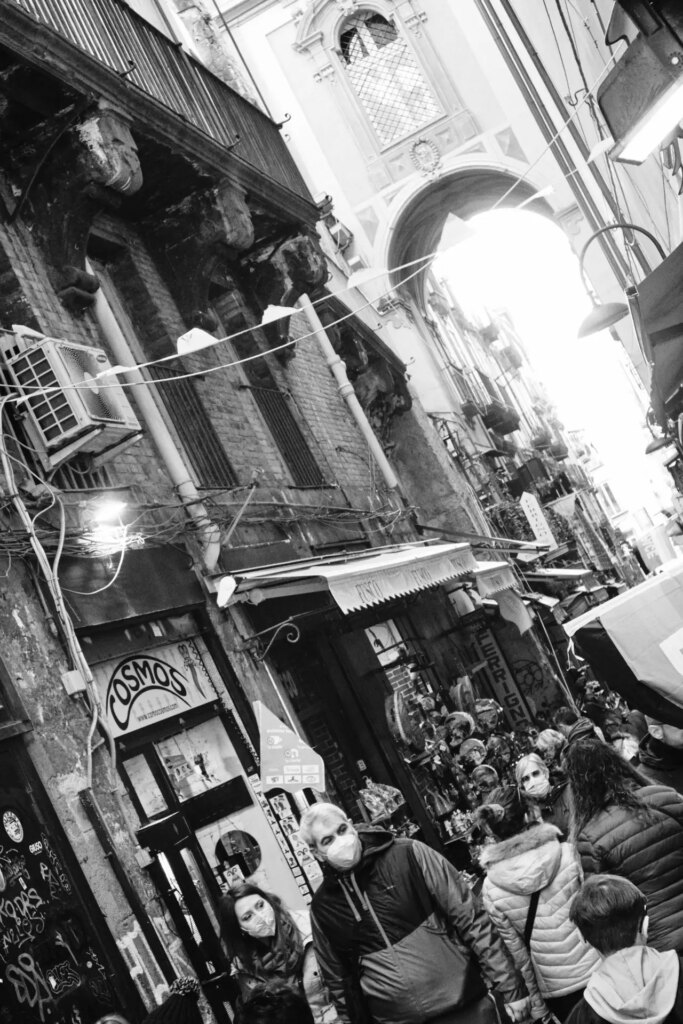
Who is this lens for?
This is an all-around lovely lens, but I think it really shines as a street photography lens. It has character, but not too much. It’s compact. It’s acceptably sharp—for street—when you want it to be. The manual controls are suited to aperture-priority. The focus ergonomics work just fine for manual focusing, although the slow speed is working against any through-the-lens focusing system; the focus fall off makes it suitable for zone focusing.
The slow maximum aperture means that it’s not as useful indoors or in the dark—focusing will be difficult, and you’ll need to increase the ISO or use a faster film. It’s not razor sharp like a modern lens, especially wide open so if you’re chasing perfection, forget it. And the aperture ring is fiddly and makes shutter-priority shooting (manually) nearly impossible.
All of which makes this my current favorite street photography lens, when mounted to my Fujifilm X-Pro 3.
What next?
I love walkaround lenses; I’ve already reviewed another unexpected delight in the Industar-69, and I’m planning a few more reviews (not all as glowing (!!) as this one). If you’ve got a favorite walkaround lens, I’d love to hear about it in the comments! Or, if you know more about Kyoei Optical Co., Ltd., please do share!
Thanks for reading! You can view more of my street photography, or support my work by purchasing prints at my portfolio. Or you can keep up to date with my daily photography by following me on Grainery and on Instagram.
Share this post:
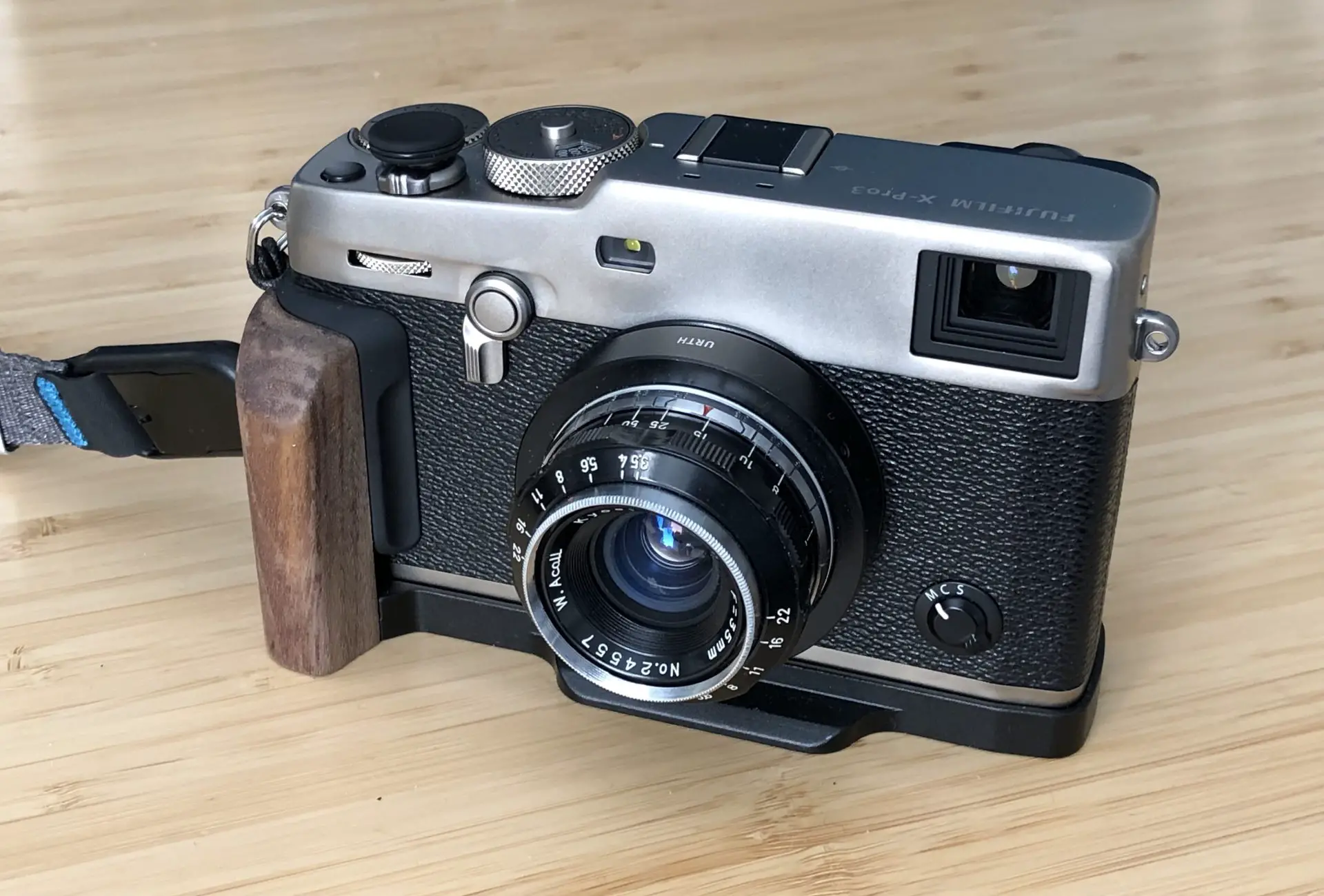








Comments
Martin on Kyoei W.Acall 35mm LTM (on Fujifilm X-Pro3) Review – A Delightful Daily Walkaround Lens on APS-C – By Don Goodman-Wilson
Comment posted: 15/07/2022
Comment posted: 15/07/2022
Nick Cliff on Kyoei W.Acall 35mm LTM (on Fujifilm X-Pro3) Review – A Delightful Daily Walkaround Lens on APS-C – By Don Goodman-Wilson
Comment posted: 15/07/2022
Have used the earlier Kyoei W.Acall made and branded Galaxy 35mm f3.5 M42 this being the UV uncoated preferred lens you mentioned for macro photography using a focusing helicoid using an OM EM1 camera and have since purchased the same early Kyoei Acall branded version of this earlier 35mm f3.5 UV preferred lens and have found the lenses plenty sharp enough at f3.5 and as you mentioned with your lens the out of focus areas are very pleasing with this lens too.
Comment posted: 15/07/2022
Kodachromeguy on Kyoei W.Acall 35mm LTM (on Fujifilm X-Pro3) Review – A Delightful Daily Walkaround Lens on APS-C – By Don Goodman-Wilson
Comment posted: 15/07/2022
1. 400 Euros sounds rather stiff for an off-brand lens.
2. The glow around bright light might be partially due to internal haze.
3. On your example tests of the Lego diorama, did you focus behind the pink flowers?
4. The b&w street scenes are fabulous. I need to brush off my Fuji X-E1. I might mount my Jupiter-8 lens.
Comment posted: 15/07/2022
John Squillace on Kyoei W.Acall 35mm LTM (on Fujifilm X-Pro3) Review – A Delightful Daily Walkaround Lens on APS-C – By Don Goodman-Wilson
Comment posted: 15/07/2022
Comment posted: 15/07/2022
Clive Shepherd on Kyoei W.Acall 35mm LTM (on Fujifilm X-Pro3) Review – A Delightful Daily Walkaround Lens on APS-C – By Don Goodman-Wilson
Comment posted: 20/12/2022
Comment posted: 20/12/2022
Sean on Kyoei W.Acall 35mm LTM (on Fujifilm X-Pro3) Review – A Delightful Daily Walkaround Lens on APS-C – By Don Goodman-Wilson
Comment posted: 09/06/2023
I do like your review of this amazing little lens. It's a lens that punches above its weight and draws with buckets of individual character. I too have this lens. If you are comfortable with me providing you a link to images I have crafted using this lens, here it is for your enjoyment and perusal:
https://www.flickr.com/photos/hewlbane/albums/72157635830006554
Kind Regards
Sean
Comment posted: 09/06/2023